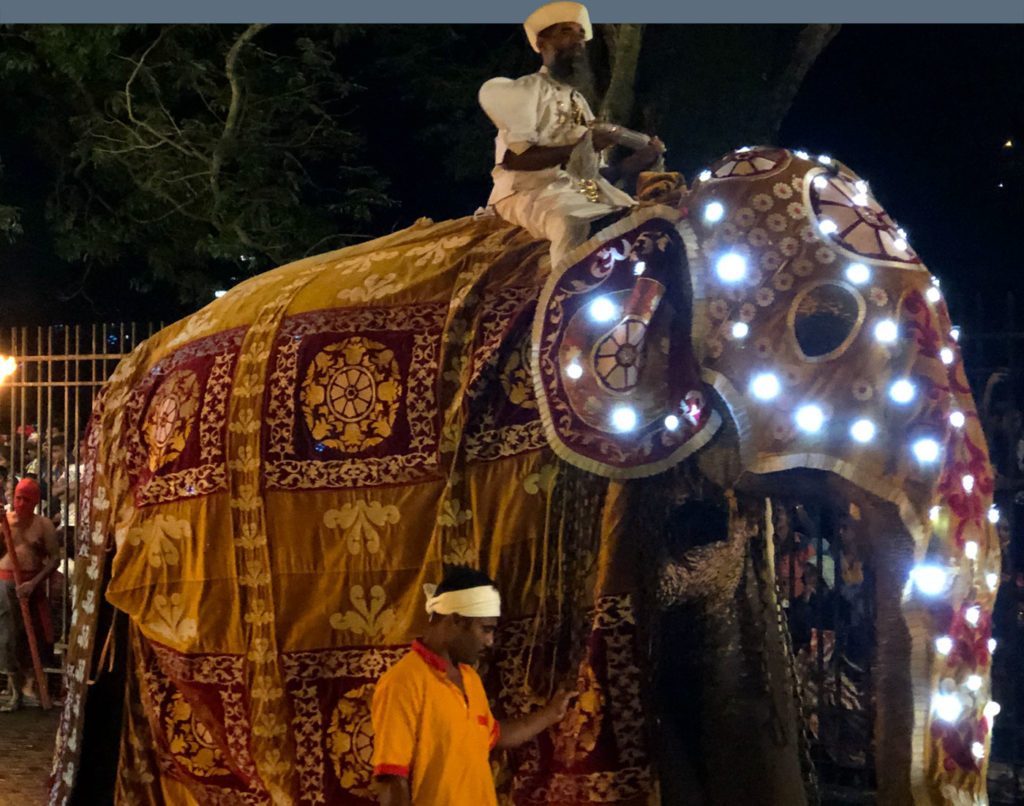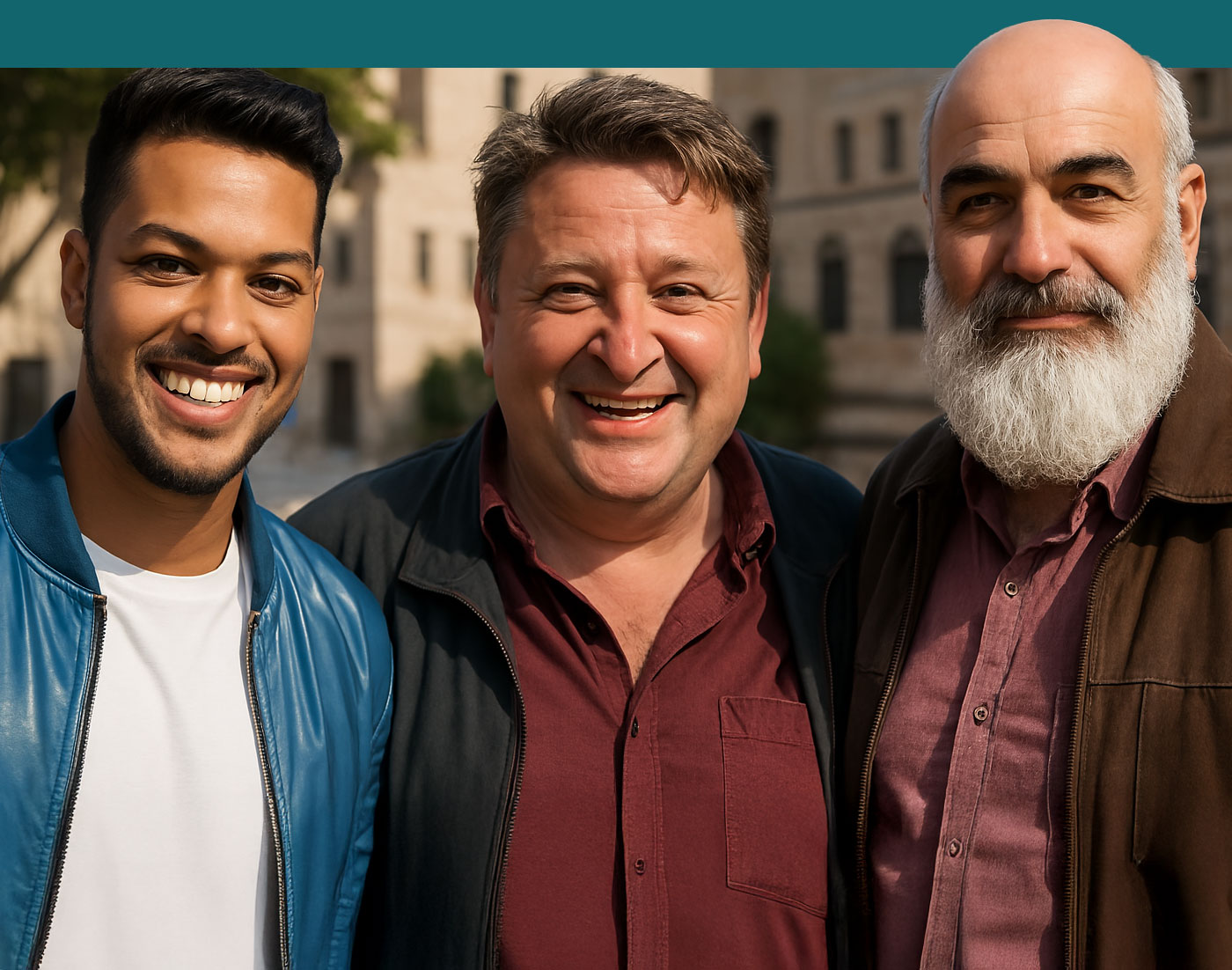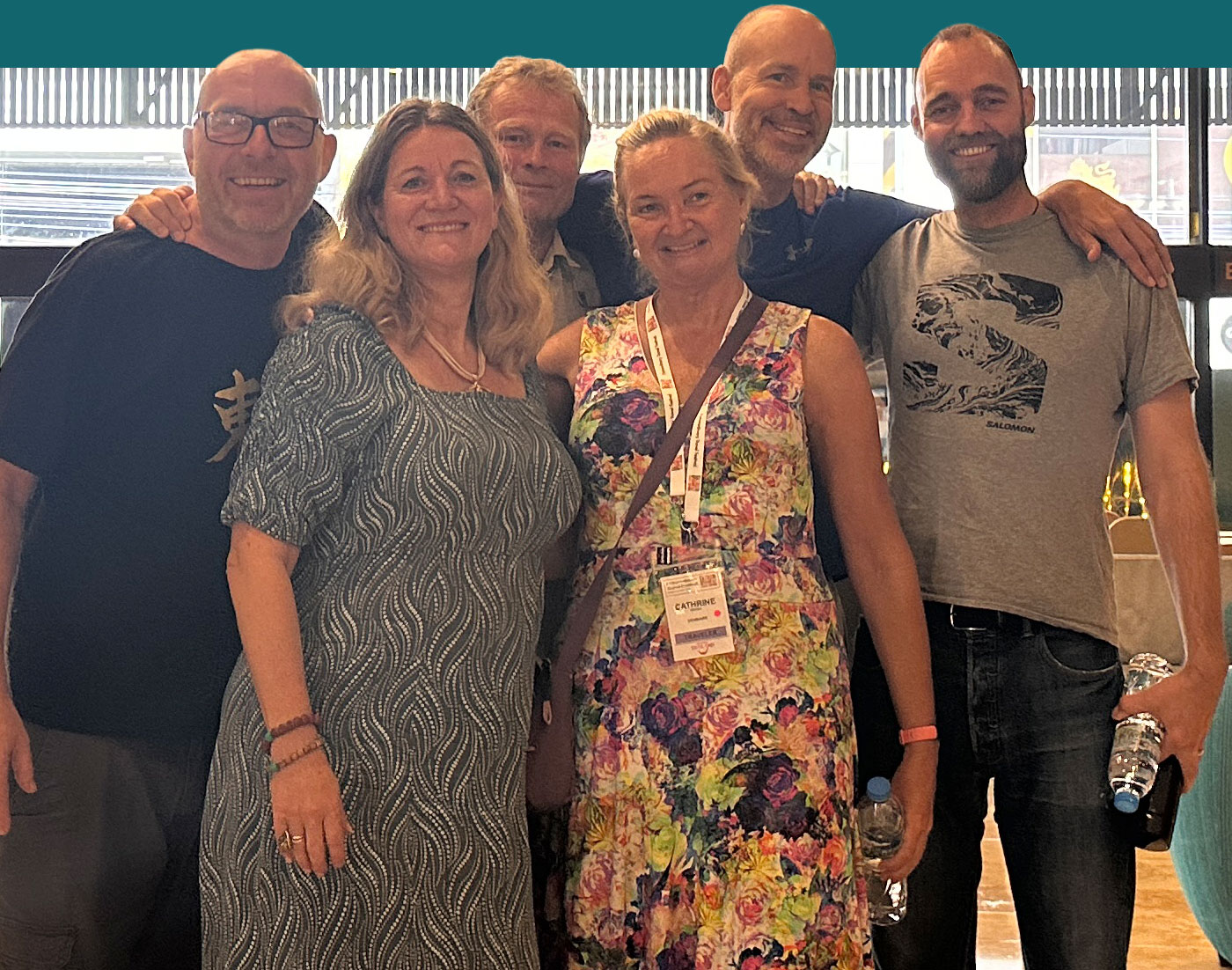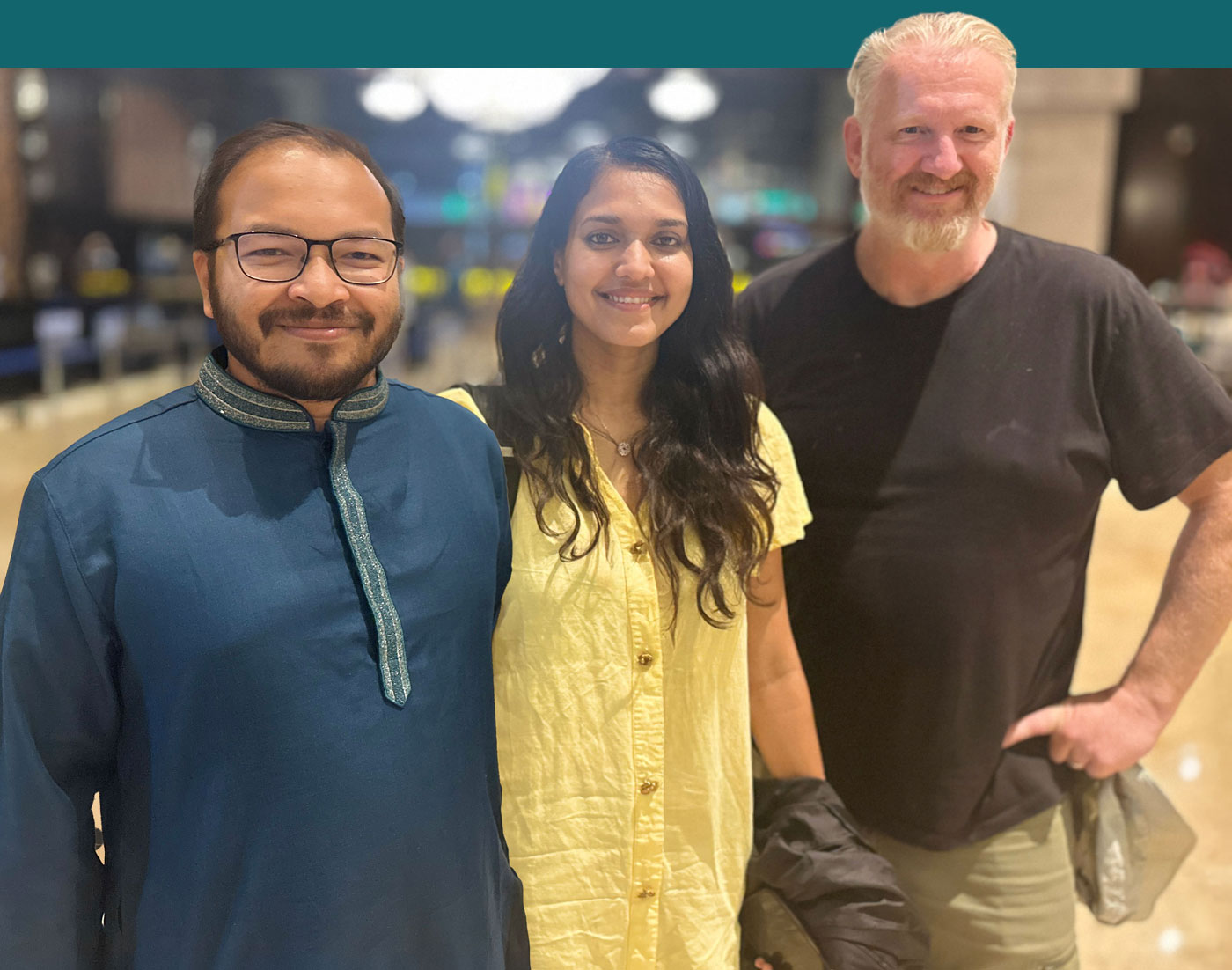VISITING THE BEST HANDCRAFTED SOUVENIRS IN SRI LANKA
If you are like me, I don’t usually spend that much money or time shopping during my vacations and travels. A large chunk of my budget and hours often goes to the unique travel experience itself; transportation, guided tours, and anything I can store in the bank of my precious memories.
And shopping for me, mostly, can take too much time, and it’s not easy to find something that’s unique and authentically associated with the place I went to. However, somehow, visiting Sri Lanka changed my mind. The place we went to has a wide array of souvenir items at a price that didn’t hurt the pocket.
Read more on Is Sri Lanka Safe to Travel
THE UNIQUE SOUVENIRS IN SRI LANKA
While I’m not really an avid shopper, I want to make my Sri Lanka trip more memorable by bringing something that can remind me of my visit there. Another reason that I made an exception with Sri Lanka their top quality, and handmade, and distinctive gifts.
Looking for souvenir items in Sri Lanka doesn’t have to be a time-consuming experience. Here are two of the best-handcrafted shops in the country.
HENRY BATIKS
My first stop was a souvenir shop and one of the most famous batik workshops in Dambulla, Henry Batiks. At Henry Batiks, we were given a tour of the process of how they meticulously create their crafts.
As shown to us by Henry Batiks crew, they would first prudently apply wax to the areas that are not supposed to be dyed. Then the fabric will undergo dyeing, then after that, the material must be secured on a platform, they’ll wash the wax out, and wax is applied again. Then the fabric will be dyed again afterward.
Such will make the designs gradually develop through the color washes procedure. We were told that the process requires the batik workers to work longer hours in a week for this piece of art. They give value with their work, making batik even more special Sri Lankan souvenir.
Not only that, you buy a piece of fabric or clothe from Henry batiks; you’re also given a unique demonstration of the dying fabrics in wax and ink.
The Dutch brought the art of batik making from Indonesia to Sri Lanka. You’ll find several batik stores and workshops across the island.
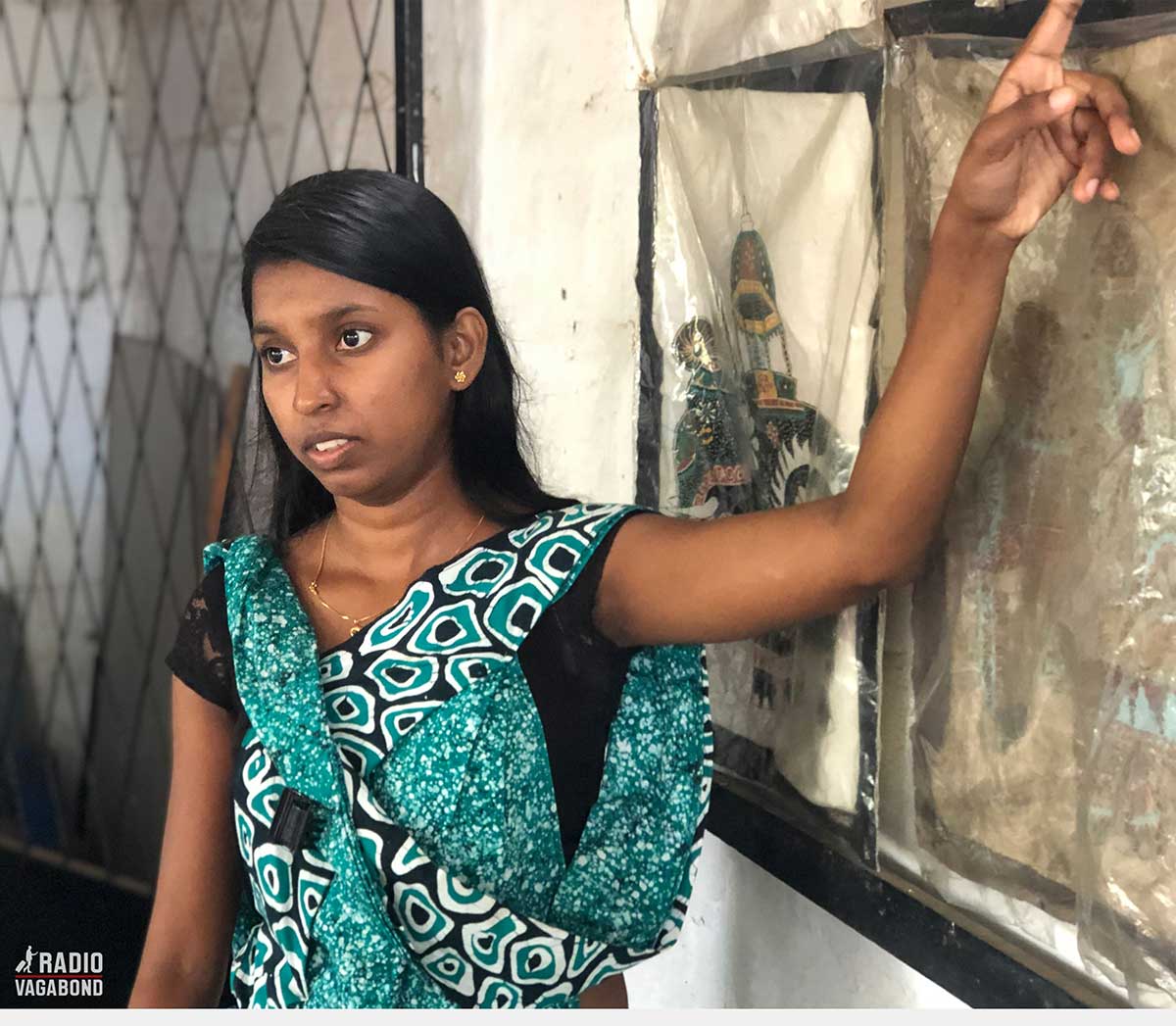
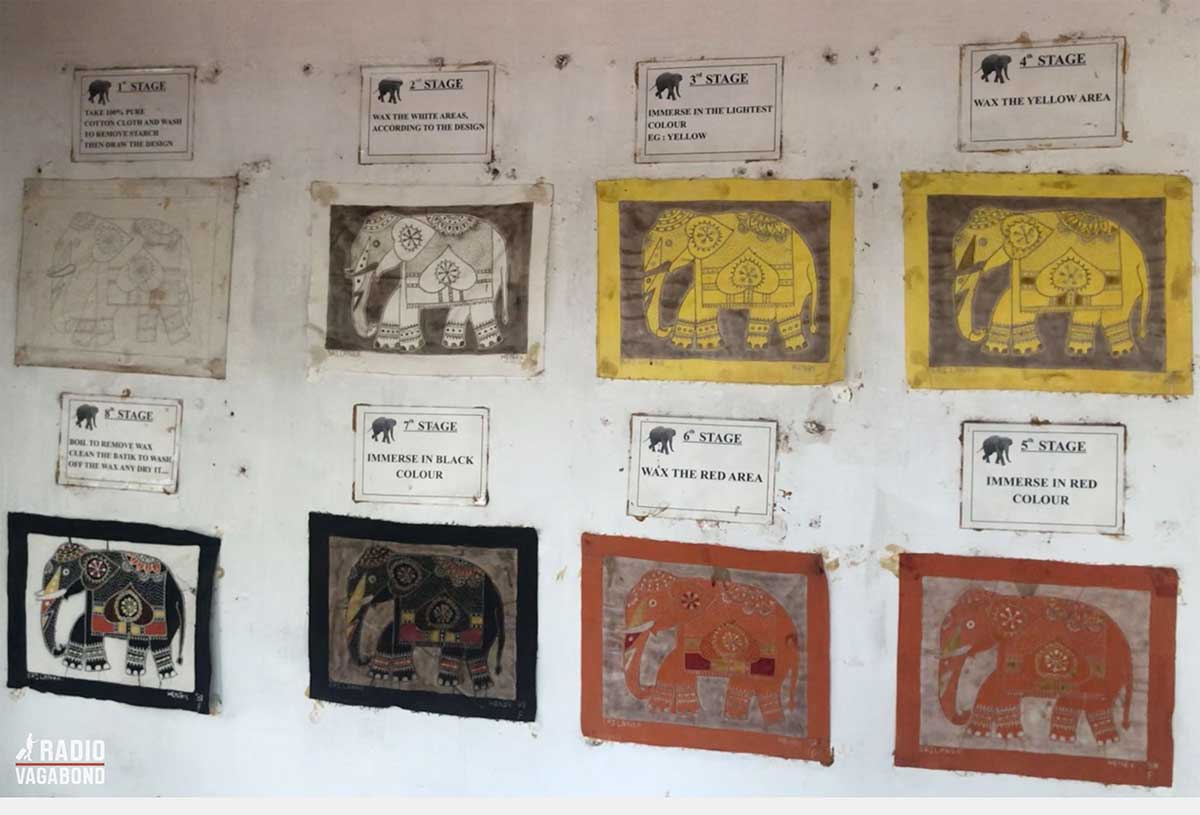
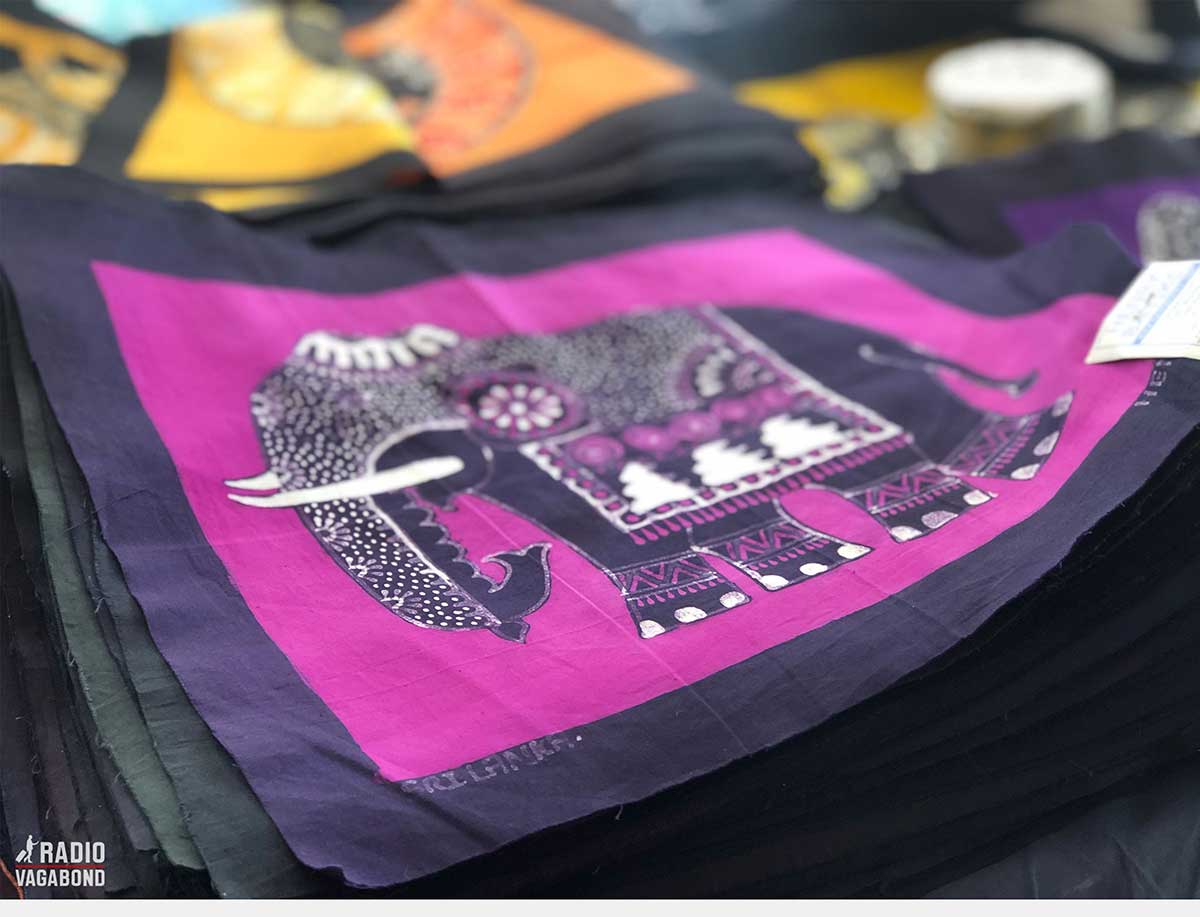
RAJANIMA CRAFT
The next souvenir shop we visited is in Kandy, Hill Country, Sri Lanka. This shop is considered as one of the unique wood crafts and creations in the country, and this is the Rajanima Craft & Gallery.
In Rajanima, we were indulged with the art of Sri Lankan masks, woodcarvings, and furniture making. One of the staff greeted us, and he gladly toured us through the process of crafting and carving the wood. He also explained to us that the process starts with choosing from the several varieties of wood available in Sri Lanka, mainly mahogany and coconut tree.
We moved forward to the smaller workshops where we found craft workers are sketching art to the carvings, then carefully measuring, cutting, and finally smoothing the final product. Further, into their shop, our guide also showed us their masks, wooden elephants, bowls, furniture, and any other crafts in different shapes and sizes under production.
What is more impressive though, is the process of how their wooden elephants are handcrafted, especially the amazing paintwork which they call “The Rainbow Tree”. We are simply mesmerized by the meticulous steps on how they apply this natural paint.
You can also find more items in Rajima which include, Lord Ganesha idols, traditional Sri Lanka 5 energies, chessboard, and other wooden souvenir art pieces.
Henry Batiks and Rajanima Craft & Gallery offered us not only some souvenir items we bring home from the trip. What I really appreciate more was culture and the ancient methods that they used for many generations to bring these arts to the modern world. More than shopping, what was even more valuable is how the experience enriches my mind and soul by seeing how they preserved this art for many decades.
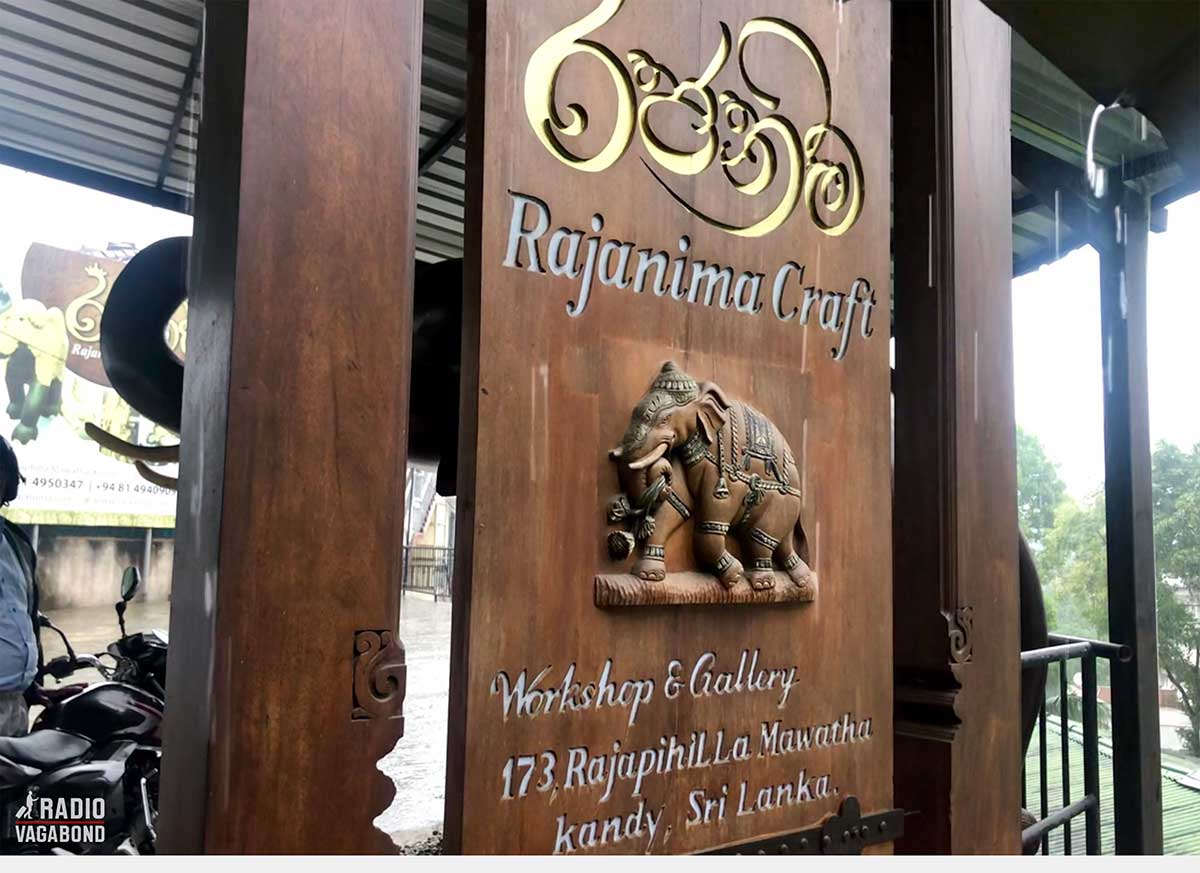
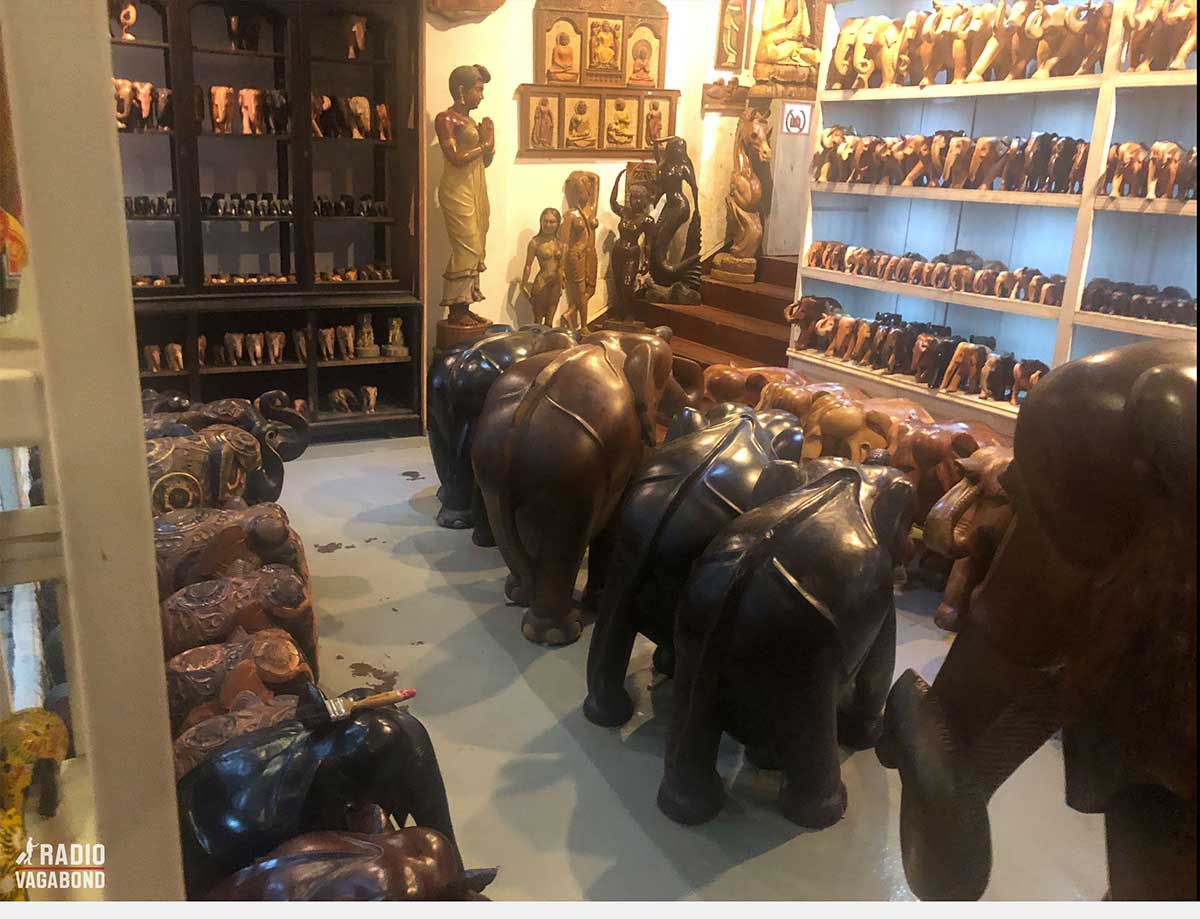
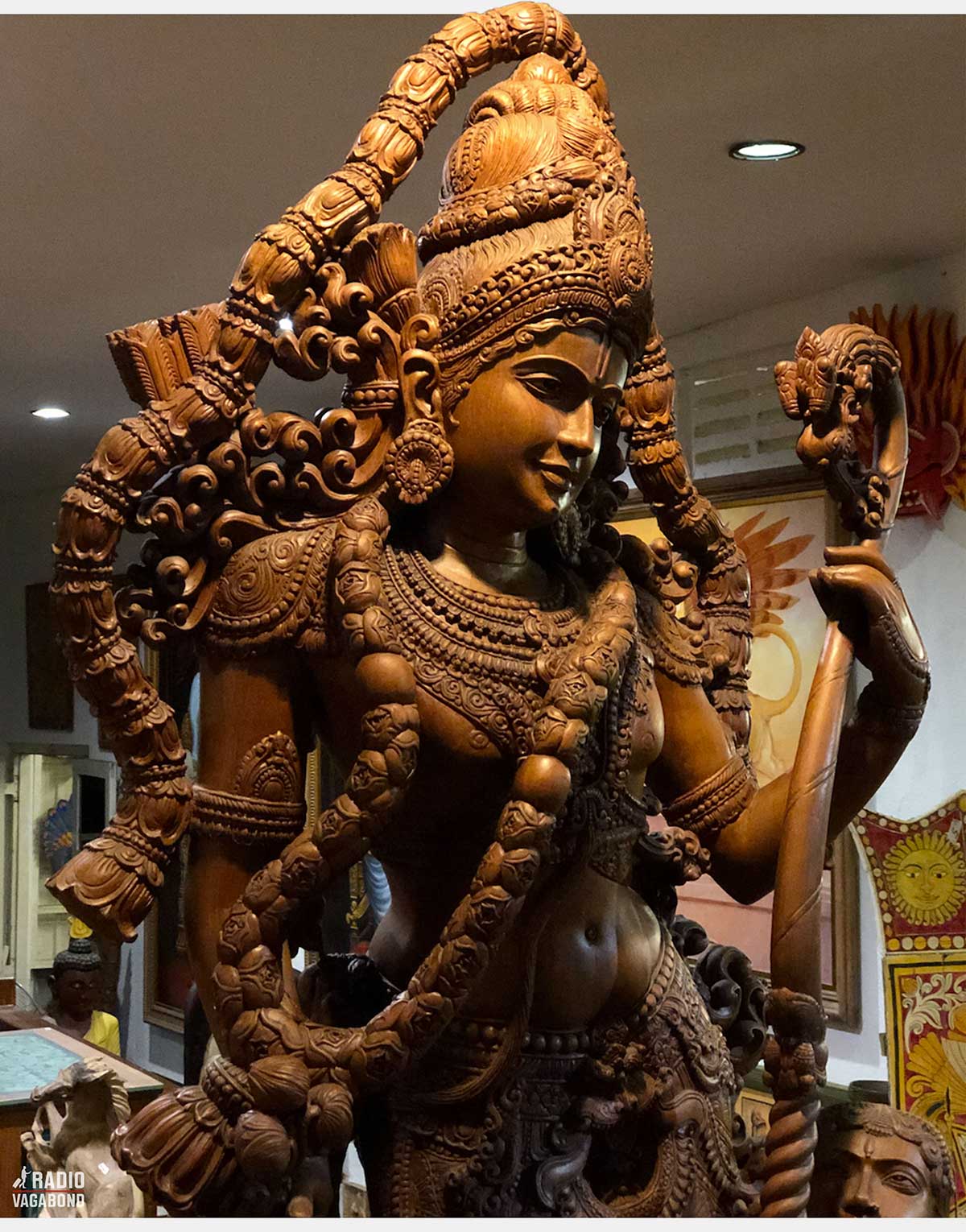
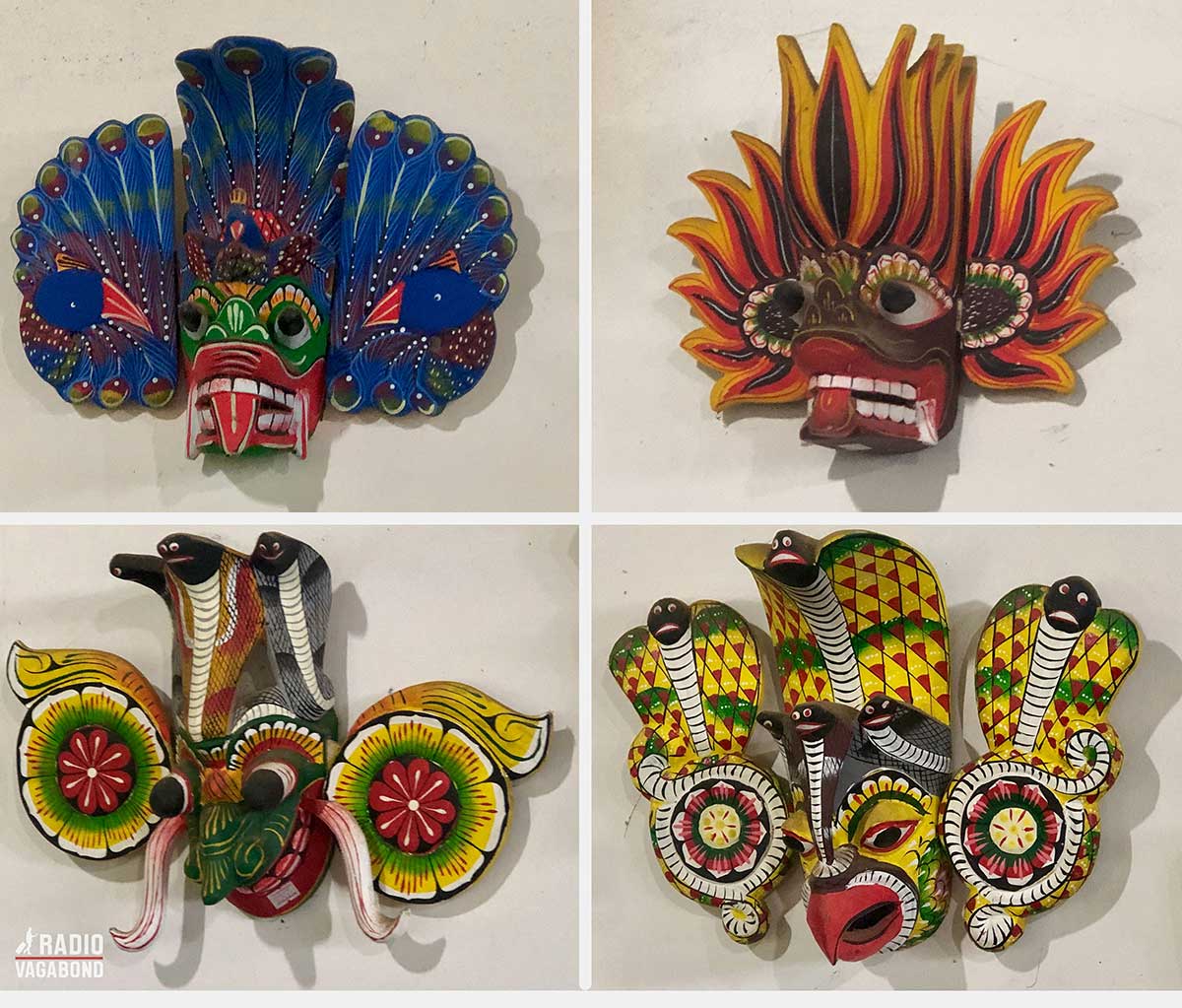
FESTIVAL OF THE TOOTH
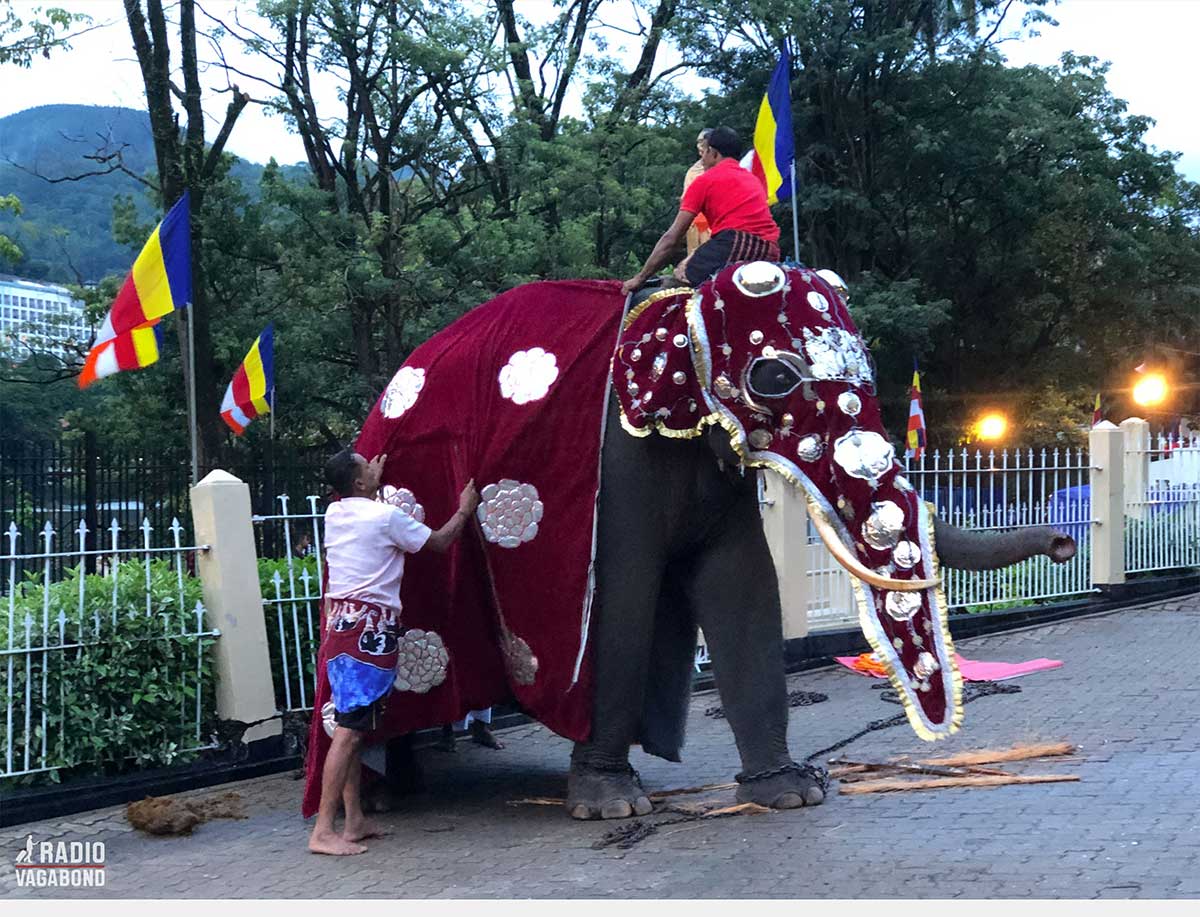
On a tour of Sri Lanka, it’s almost common sense to pay a visit to one of the country’s most holy places: the Temple of the Sacred Tooth Relic. This golden-roofed temple in Kandy houses a tooth of Lord Buddha, a sacred relic to Buddhist culture. We went inside the temple for puja (offerings and prayers) along with other tourists and devotees, but we never really got to see the tooth. It was heavily guarded and carefully kept inside a golden casket.
Our visit to Kandy came at a perfect time when they were holding the Kandy Esala Perahera. Also known as the Festival of the Tooth, this is an annual 10-day festival celebrating the sacred tooth and the old gods of Sri Lanka. It was a grand and joyous event, with different singers, jugglers, fire dancers, and other performers in colorful costumes on the grounds.
THE KANDY ESALA PERAHERA
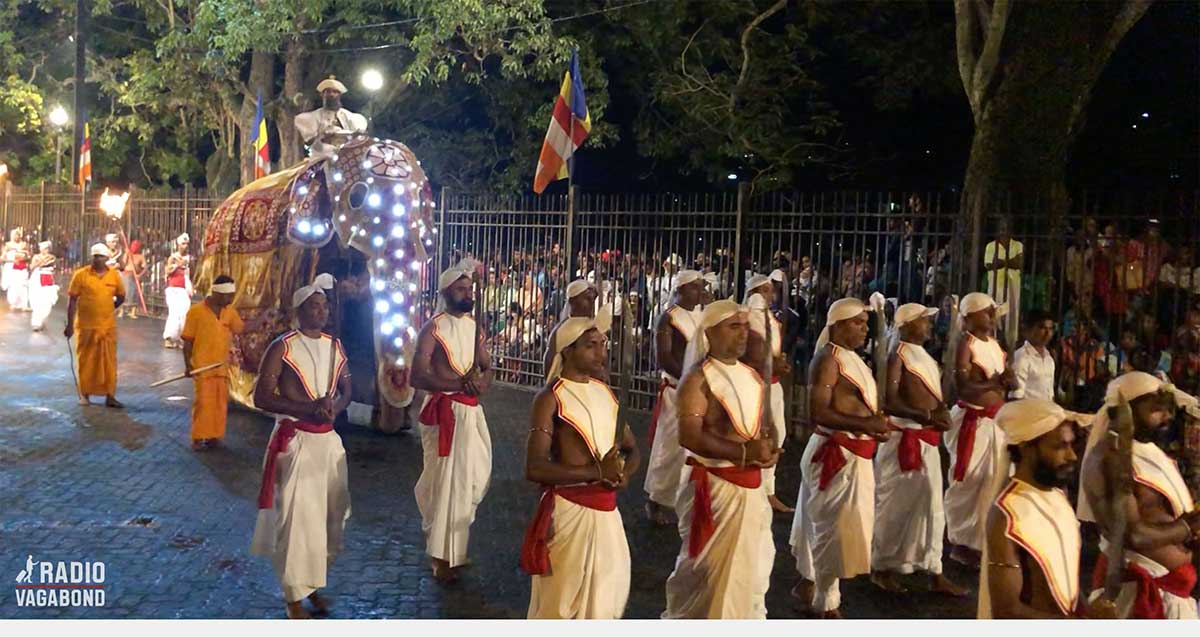
The security check before entering the grounds was very tight, much like in an airport. It was understandable because these many people coming in and out in one place can quickly become unruly. Modest clothing that covered the knees was required for entry, so I almost wasn’t able to enter. I was wearing shorts that barely covered my knees, so one of our guides whispered to me to pull them down to cover my knees. I looked quite funny with my shorts pulled down, even revealing some parts of my underwear, but at least I was able to enter the festival.
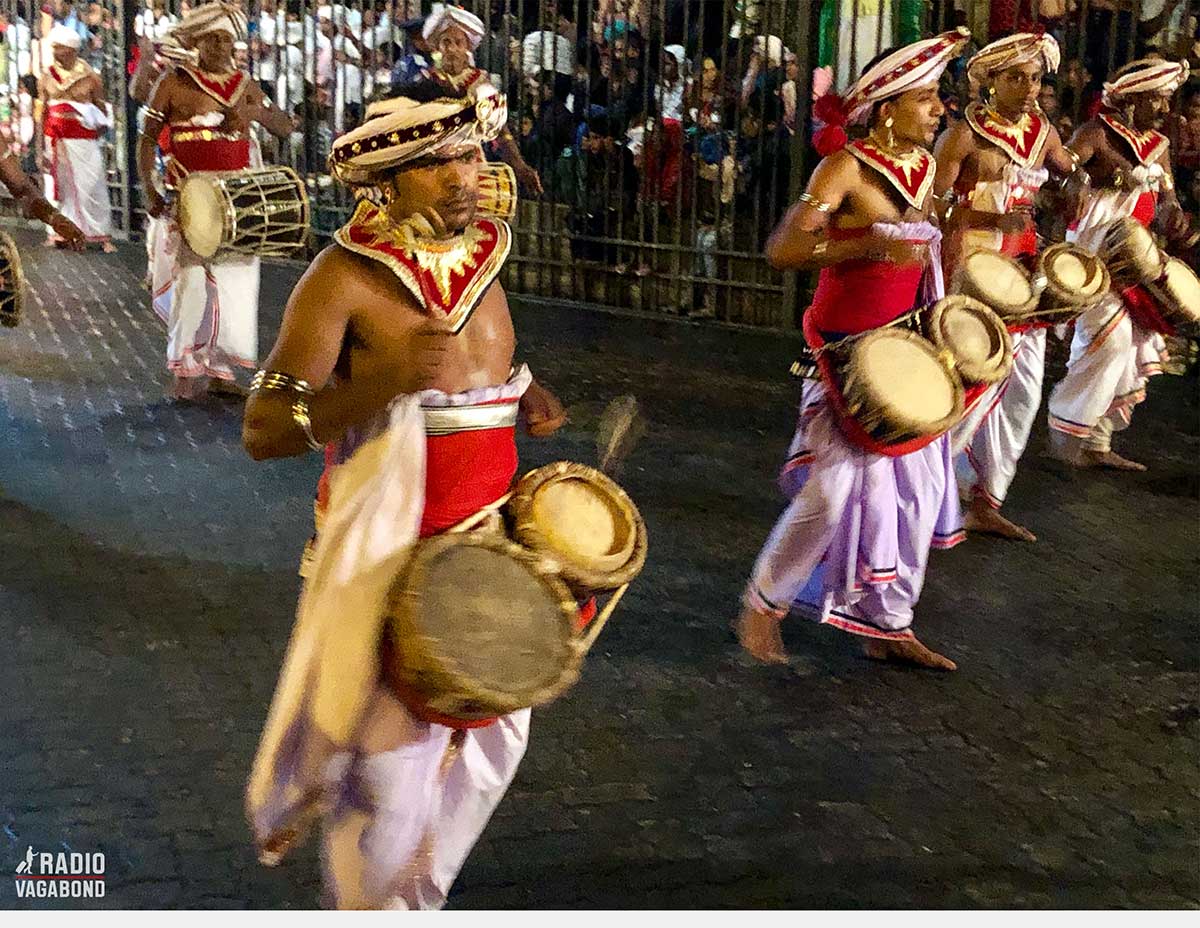
Before attending the procession, we were guided to an area for a short press briefing about the festival. Here I learned that the Esala Perahera is one of the grandest and most important festivals, not only in Sri Lanka but in the whole Buddhist community. Dating back to the 3rd century BC, the modern Esala Perahera is now a massive procession attracting devotees and tourists from all over the world.
After sunset, the parade started, and I was immediately impressed. The first in the show were dancers cracking whips, which was a great and noisy way to open the procession. Then the music came in for the many singers, drummers, and dancers. A fire dancer was even blowing rings of fire up into the air, which looked much more spectacular in the dark. Every one of the hundreds of people in the parade was wearing beautiful and colorful costumes. It was a sight to behold.
Then something came in that I did not like to see.
ELEPHANTS ON PARADE
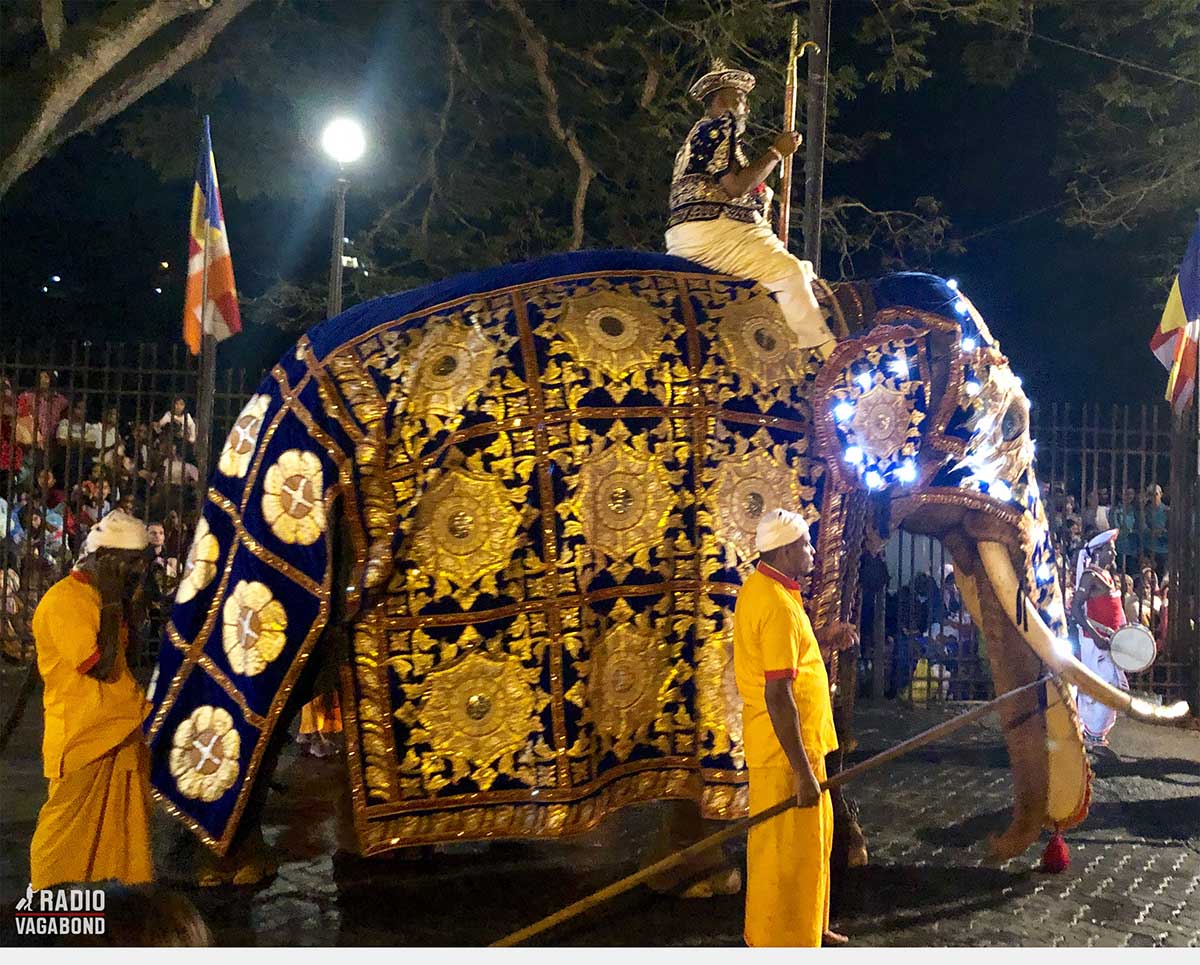
The Esala Perahera is an integral part of Sri Lanka’s celebration of its heritage and religion, and so who am I to say anything critical about the parade? But because I cannot stay silent and go against what I stand for, I will.
After the spectacular procession of the drummers and dancers, out came the 80 elephants dressed up in colorful costumes with at least one person riding on their backs. Don’t get me wrong; I love elephants. And maybe that’s why I thought that this wasn’t the place for these gentle giants. Like many westerners, I have a problem with riding elephants and exposing them to noisy and crowded environments like in the parade.
During the press briefing, it was almost like they were expecting this reaction from us. The spokesperson explained that the elephants have been trained and were not harmed at all, contrary to what many western countries think. These elephants have been used ever since the start of the festival thousands of years ago. “Elephants have long been used for the Perahera. That is our nature, that is our culture,” the spokesperson said.
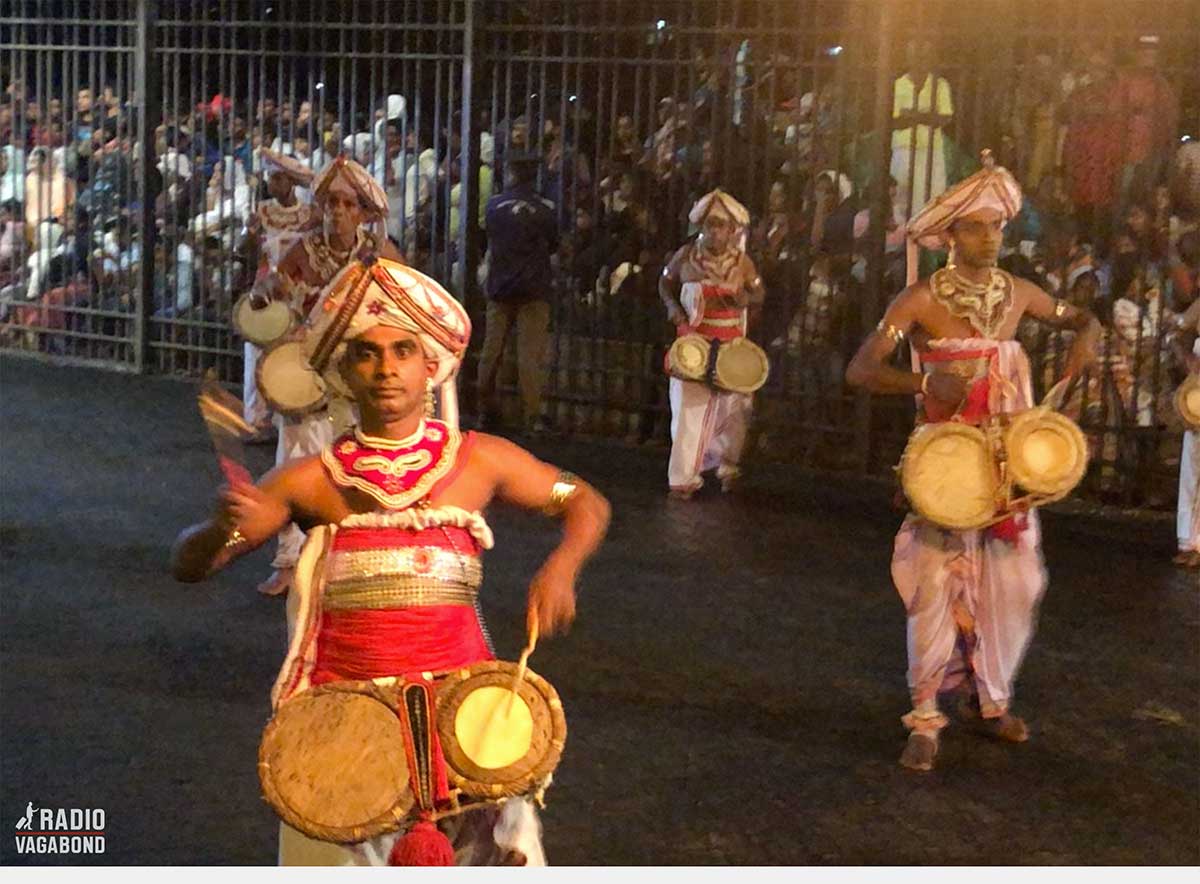
I was very conflicted with this issue for a while. While I wanted to show respect to my hosts here in Sri Lanka and the heritage, I also know that elephant riding is something that I am strongly against. So I had been wondering whether I shouldn’t have mentioned the elephant riders, but would that have meant I was turning a blind eye to the issue? Maybe I shouldn’t have attended the festival in the first place, but it is too essential a part of Sri Lankan culture to miss.
ADDRESSING THE ELEPHANT IN THE ROOM
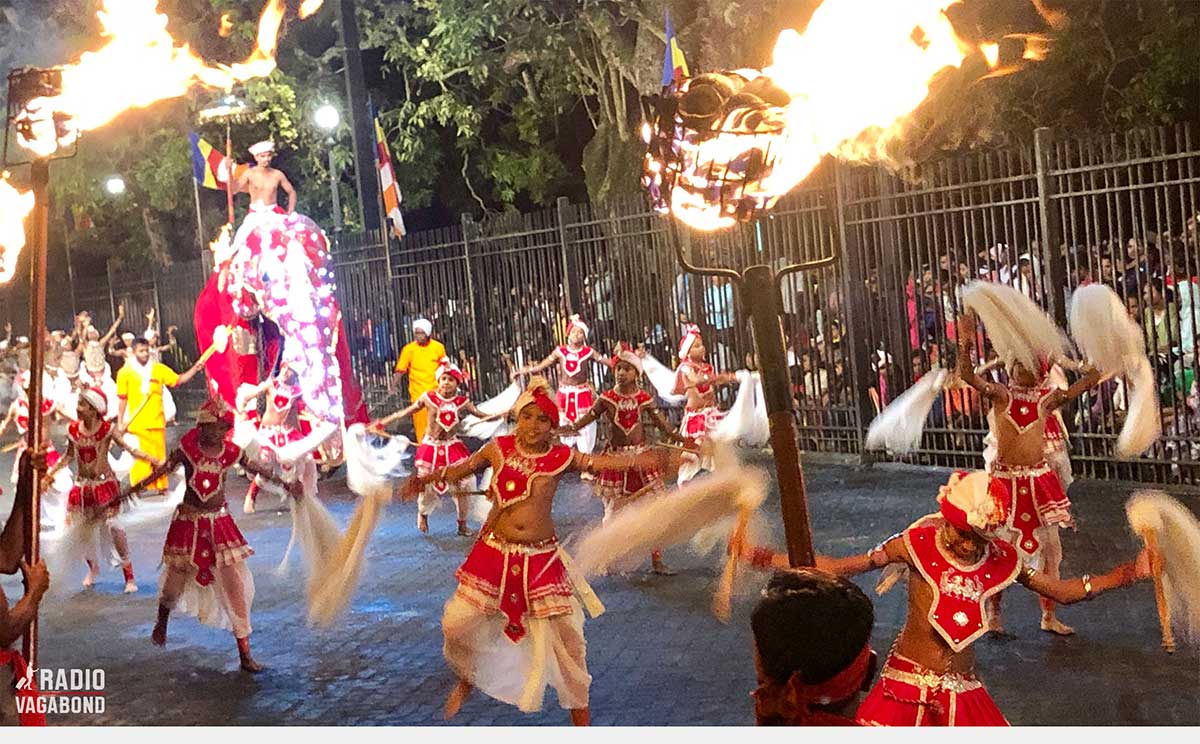
To help me understand more about the elephants in the Perahera, I caught up with Chaminda Munasinghe one month later in Montana. Chaminda is from the Sri Lanka Tourism Promotion Bureau and was responsible for inviting me on this trip.
As Chaminda explains, the elephant is a holistic animal that is worshipped in Sri Lankan culture. It has been used for thousands of years throughout the country’s history, like transport for kings and royal families. And in the Esala Perahera, the elephant has a vital role because the Buddha’s sacred tooth must be carried by something holistic. To pay respect to this sacred relic, the elephant carries the tooth just like a king. The other elephants in the parade are to showcase the pride of Sri Lanka.
I asked Chaminda whether the riding of the elephants is necessary. He explained that the domestication of the elephants is only for a select few, like for the temples and the noble class. According to Chaminda, wide landscapes are made for these elephants so they can roam around freely. He also claims that the elephants aren’t used for labor purposes anymore, and only during the Perahera period are they used for the parade.
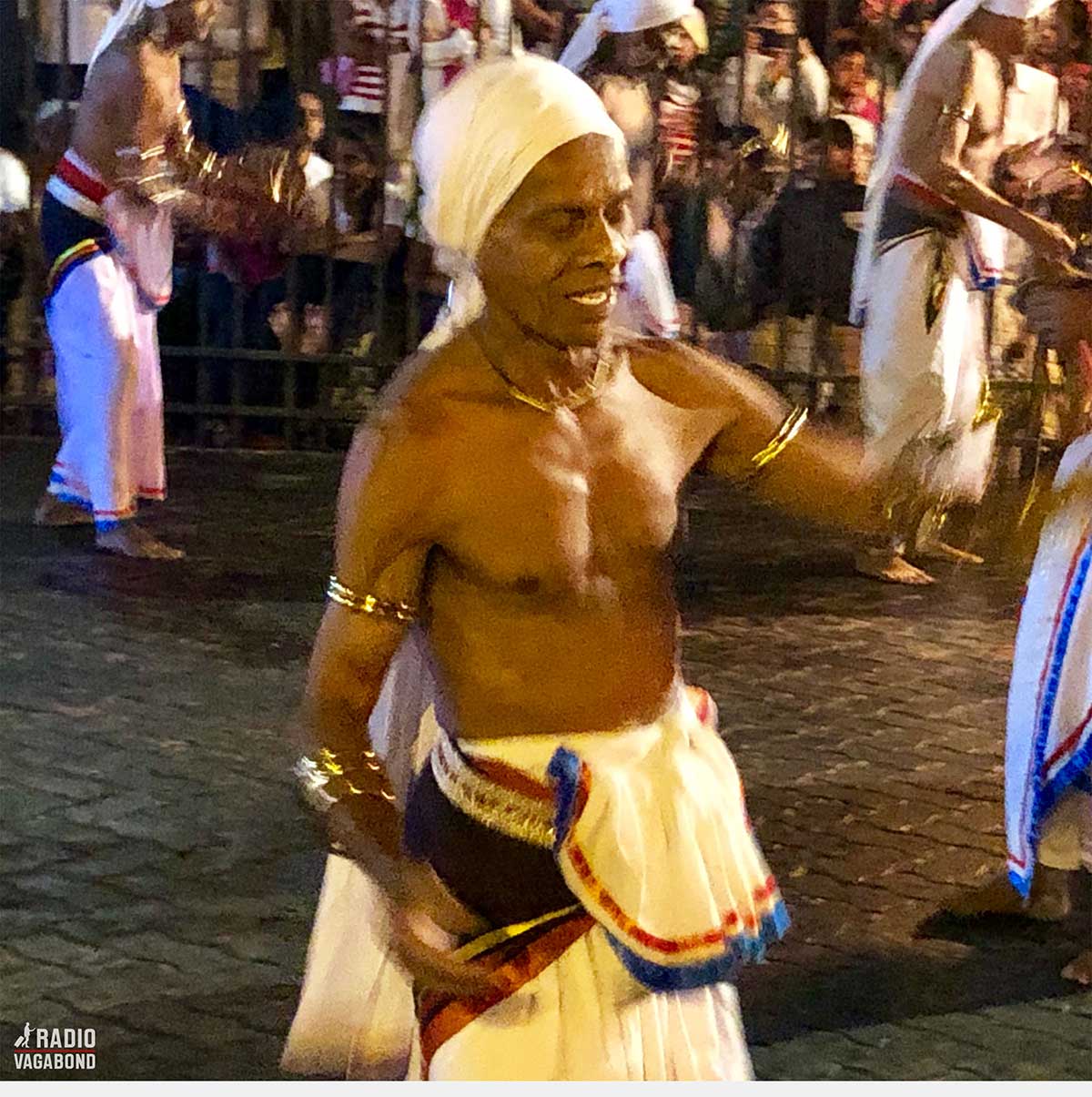
But Chaminda agrees that thereis something wrong with using elephants for the parade. He shares that Buddhist philosophy says never to hurt anybody – not even a fly – and so using animals for the parade is a bit confusing. But it is challenging to change this tradition that is deeply ingrained in the Perahera and the Sri Lankan culture. It will take many years and many lobbying efforts to change a thousand-year-old tradition like this. There’s the question of what the alternative will be if ever there are no more elephants to carry the sacred tooth or to showcase Sri Lankan pride.
But because of increasing awareness for animal rights all over the world, these changes may not be too far off in the future. I would love to visit Sri Lanka and the Kandy Esala Perahera, maybe ten years from now, to see how far we have come along.
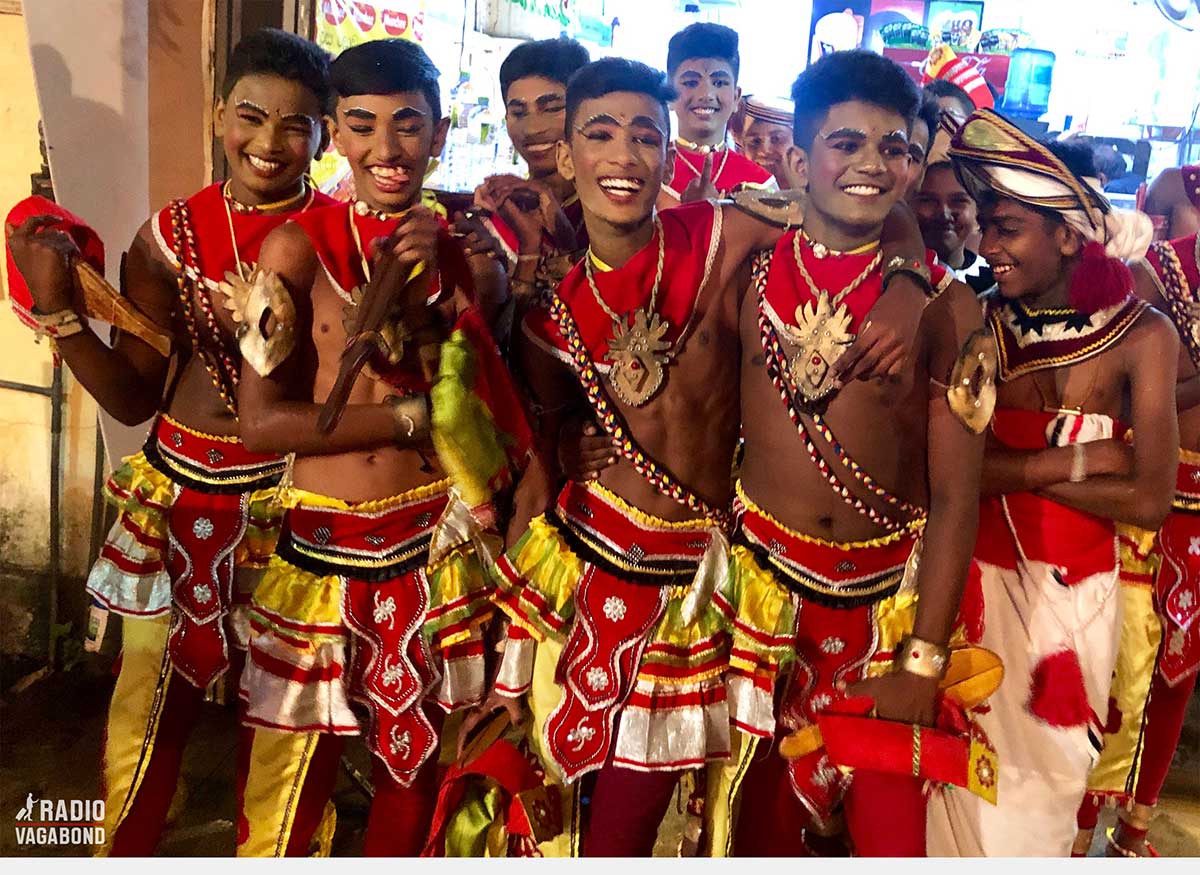
DROP ME A LINE
I would like to hear from you. Where are you and what are you doing as you listen to this episode. Please send me an email on listener@theradiovagabond.com or send me a voice message on WhatsApp to +45 40 105 105.
DISCLAIMER
The trip to Sri Lanka was made possible by Sri Lanka Tourism, but everything I say is my own genuine opinion.
LINKS

